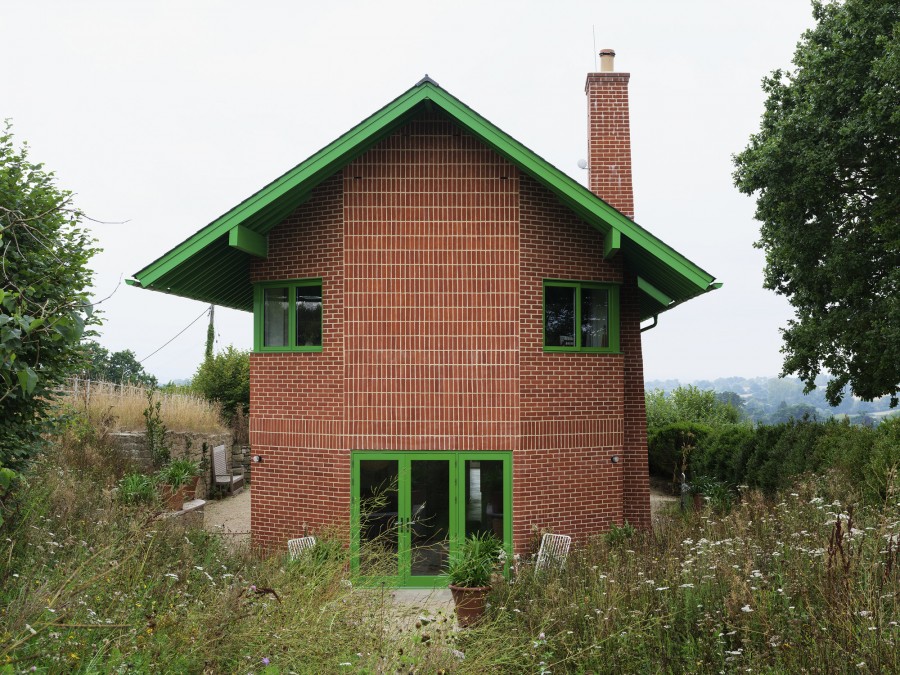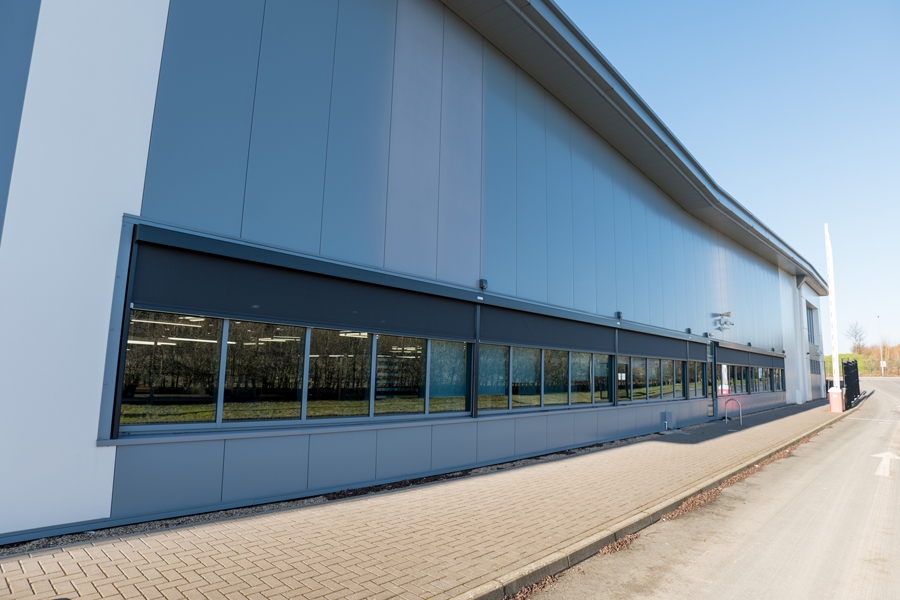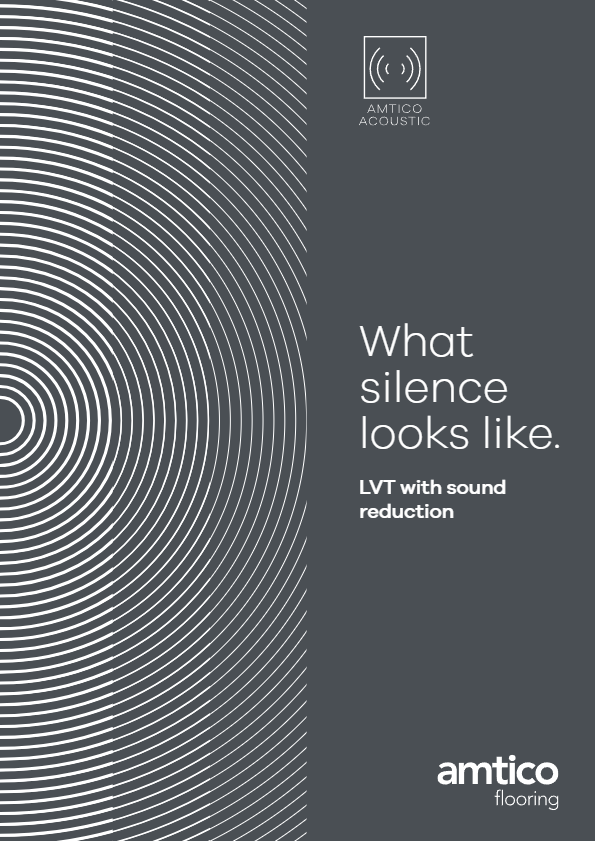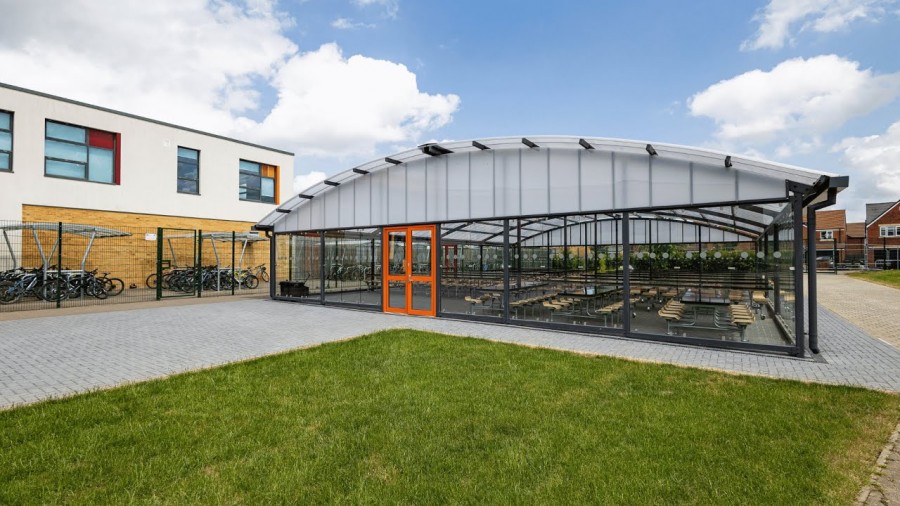The Brick Development Association is pleased to announce this year’s winners of the annual Brick Awards.
Category: SUPREME WINNER/SUSTAINABILITY/ CRAFTSMANSHIP
- Winning Project: Shrewsbury Flaxmill Maltings
- Location: Shrewsbury, Shropshire
- Brick Manufacturer: Northcot Brick
- Brick Name: Brickfield Orange, Weathered and Stratford Mellow Weathered
- Architect: Fielden Clegg Bradley Studios
- Brickwork Contractor: Croft Building and Conservation Ltd
Putting this 225-year-old Grade 1 listed building ‘back to work' ; after 30 years of dereliction required comprehensive repair, retrofitting and bold insertions to safeguard the next 100 years. The pyramidal Malt Kiln is re-purposed as a dramatic new entrance and vertical circulation providing level access to upper floors. The decision not to heat this circulation space is emblematic of a project striving towards a circular economy.
Daylighting and overheating analysis determined the need to re-open 110 former windows and the specification for solar glazing and free area for natural ventilation. Exposing masonry jack arches and installing ventilators over new internal glazed partitions creates a comfortable working environment whilst retaining the open historic character.
The project team repaired, reused and retrofitted driven by long life loose fit design principles. The fixed budget and high aspirations for sustainability and design quality called for collaboration across the team to achieve this exemplar of adaptive re-use.
Judges’ comments: The creation and application of new brickwork into this existing building is a highly executed example of craftmanship. The heritage skills programme and light touch conservation approach as a mechanism to repair and convert this internationally important building is an accomplishment.”

Category: SUSTAINABILITY
- Winning Project: Shrewsbury Flaxmill Maltings (see above)
Category: CRAFTSMANSHIP
- Winning Project: Shrewsbury Flaxmill Maltings (see above)
Commended: Kensington Palace Orangery
- Winning Project: Yoko Ono Lennon
Centre
- Location: Liverpool
- Brick Manufacturer: Forterra PLC
- Brick Name: Farmstead Antique
- Architect: Ellis Williams Architects
- Brickwork Contractor: McCrory
Brickwork Ltd
Category: ARCHITECTS CHOICE
- Location: Liverpool
- Brick Manufacturer: Forterra PLC
- Brick Name: Farmstead Antique
- Architect: Ellis Williams Architects
- Brickwork Contractor: McCrory
Brickwork Ltd
The Yoko Ono Lennon Centre is a
unique teaching and performance building at the University of Liverpool. It has
been designed by Liverpool School of Architecture graduates based at UK
architecture practice Ellis Williams.
The new facility includes The Tung
Auditorium – a world class music performance space – together with two large
lecture theatres, seminar rooms, café space, a public facing linear park and a
new outdoor space for the University. With a floor area totalling around 6,500 sq meters
the building was planned around a careful understanding of the site and an
innovative response to a challenging brief (and budget).
The lecture theatres were arranged
vertically, which allowed for a much smaller building footprint – freeing up
the site to deliver a linear public park alongside the main arterial route
adjacent to the south elevation (Grove St). This also allowed for large volume
and height of Tung Auditorium to be placed adjacent to the teaching spaces,
separated by the main atrium circulation space.
The Judges’ comments: “A bold design choice to stack theatres and
acoustically separate them, to give back external spaces to the surroundings. A
very impressive building on all levels.”

Category: CONTRACTORS' CHOICE
- Winning Project: Kensington Palace
Orangery
- Location: Kensington, London
- Brick Manufacturer: Bulmer Brick
& Tile Co Ltd
- Brick Name: Mulberry Stock, Red
Rubber
- Architect: Purcell Architects
- Contractor: Swift Brickwork
Contractors Ltd
Kensington Palace Orangery, located
next to Kensington Palace in Kensington Gardens, was built in 1704-05 for
Mary's younger sister, Anne, who became Queen when William died. Anne used
Kensington for entertaining and she held parties in the Orangery.
The building had under-floor heating
and in winter it was used as a conservatory for delicate plants.
The original architect of The
Orangery is thought to have been Nicholas Hawksmoor, the clerk of works on
Kensington Palace and the designer of six new churches in east London.
In 2019, plans were submitted to
build the education centre at the palace, where a two-floor extension to the
Orangery will allow enough space for a lunch and afternoon tea restaurant,
catering facilities and an outdoor terrace.
Judges' comments: “A fantastic demonstration
of traditional methods of hand brick carving and colour matching with the
original Orangery façade. Tremendous craftmanship unanimously voted for by the
UK leading Brick Work Contractors.”
Category: INDIVIDUAL HOUSING
DEVELOPMENT
- Winning Project: Red House
- Location: Twyford, Dorset
- Brick Manufacturer: Ibstock Brick Ltd
- Brick Name: Laybrook Imperial Red
- Architect: David Cohn Architects
- Brickwork Contractor: Ken Biggs
Contracts/4R Building Limited
The Red House, a contemporary new
home in rural Dorset, designed by David Kohn Architects, was named RIBA House
of the Year in 2022. The jury observed how “the house’s playful eccentricity,
including oversized eaves, patterned red brickwork, and contrasting bold green
details, jumps out - but this is consistently underpinned by outstanding
craftsmanship and attention to detail.”
In naming the Red House, David Kohn
Architects sought to unashamedly tie the house to a story about English
domestic architecture that stretches back to Hermann Muthesius’ 1904 book ‘Das
englische Haus’ and beyond. Muthesius called architect Philip Webb’s 1860 brick
masterpiece, Red House, ‘the very first example in the history of the modern
house.’ It was both pre-occupied with vernacular traditions of house-building
while also unifying the plan and use of the house through ‘material, colour and
mass’. The abundant use of red brick was quite shocking in the Victorian
period.
Judges’ comments: “A delightful and
unexpected take on Philip Webb's Red House of 1860 that abounds with fun and
unexpected details. Wherever you turn you are met with a joyful and unique view
but the house is also immensely practical and robustly detailed.”
Commended : Manber Jeffries House,
Willesden Green, London.

Category: SMALL HOUSING DEVELOPMENT
- Winning Project: Becontree Estate
- Location: Dagenham, Essex
- Brick Manufacturer: Michelmersh Brick
Holdings PLC
- Brick Name: First Quality Multi
- Architect: Archio
- Brickwork Contractor: Daniel & Co
Brickwork Ltd
Archio has completed a new type of
villa within the Becontree Estate, as part of a major house-building programme
in the London Borough of Barking and Dagenham. Commissioned by Be First – the
borough’s wholly-owned regeneration company – the design is the product of deep
research into the characteristics of the estate, delivering a ‘gentle density’
of 19 residences, and a community space, across two buildings.
The initial brief was to provide the
maximum number of affordable homes on the site of a disused community building.
The brief developed in response to stakeholder and community engagement, for
example, a ground floor community space was added. It emerged that one of the
Ward Councillors wanted the site to be used as a park rather than housing, and
so we suggested that School Way, an adjacent pedestrian cut-through, be
re-landscaped into a play street as part of the development. Becontree was
begun in the 1920s under the ‘Homes Fit for Heroes’ pledge. It remains the
largest public housing scheme in the world, and a great source of local pride.
Judges’ comments: “Designed with such
affection, taking every opportunity to add joy to everyday life on Becontree
Avenue. This scheme and the quality of the brickwork is a thoughtfully
conceived response to the site that restores pride in the local house building
traditions of Becontree.”
Commended: Alben Works, Birmingham.
Category: MEDIUM HOUSING DEVELOPMENT
- Winning Project: The Tannery
- Location: Holt, Wiltshire
- Brick Manufacturer: Forterra PLC
- Brick Name: Bamford Blend
- Architect: Mitchell Eley Gould
Architects
- Brickwork Contractor: Stonewood
Partnerships.
Bamford Blend, a red clay brick
produced exclusively for Taylor Maxwell by Forterra, was selected as the
primary building material for 43 new homes, constructed as part of the
redevelopment of the Tannery, a derelict industrial area where leather goods were
once produced, on the northern boundary of the village of Holt in Wiltshire.
The Tannery’s buildings are a patchwork of materials, including stone, ashlar
and rubble as well as red brick and slatted timber. The village, too, features
a range of architectural styles and building materials, predominantly ashlar,
rubble stone and red brick.
Judges’ comments: “A really
thought-provoking development that is so successful with the homeowners and why
not. Everything about this scheme exudes intelligence and links to the brief.”
Category: LARGE HOUSING DEVELOPMENT
- Winning Project: Kindred House
- Location: Croydon, London
- Brick Manufacturer: Wienerberger Ltd
- Brick Name: Zircon
- Architect: Pitman Tozer Architects
- Brickwork Contractor: EBK Building
Services
Kindred House Croydon is a 25-storey
mixed-use development on the site of a former carpark next to a flyover in
central Croydon. The development provides 128 apartments, 60 of which are
Affordable, as well as 10,000sqft of offices, retail space and new public
space. The building is clad in more than half a million Zircon bricks, all hand
laid from a scaffold. Its massing is a stepped form that helps to break up the
mass of the building and create a composition of adjoining slender proportions.
The distinctive silhouette of the building marks a gateway into the south of
Croydon's Old Town.
Judges’ comments: “The bold choice to
hand-lay bricks off scaffold to deliver a high quality finish and control to what
is highly articulated and deep façade.”
Commended: The Chocolate Works, York.
Category: URBAN REGENERATION
- Winning Project: Queen’s Quay
- Location: Clydebank, West Dunbartonshire
- Brick Manufacturer: Michelmersh Brick
Holdings PLC and Ibstock Brick Ltd
- Brick Name: Porcelain White Smooth
and Bradgate Light Buff
- Architect: MAST Architects
- Brickwork Contractor: CCG (Scotland)
Ltd
Queens Quay is the first residential
phase of an ambitious programme to revitalise long-standing derelict land in
Clydebank. The site was formerly occupied by the John Brown’s shipyard, an
important piece of Scotland’s industrial heritage where some of Clydeside’s
most famous ships were built including the Queen Mary and QE2. This initial
phase occupies two neighbouring sites along the northern boundary facing
Glasgow Road, a primary route between Clydebank and Glasgow. The development’s
prominent location and its wider role as a precedent for future phases called
for a high quality architectural and urban design response, creating a gateway
to the masterplan site and a placemaking exemplar which encapsulates
overarching quality aspirations. 146 new homes and four commercial units are
provided on behalf of West Dunbartonshire Council, Clydebank Housing
Association and the Wheatley Group.
Judges’ comments: “A very impressive
building with crisp lines of functional brickwork that is well designed and executed
by providing much needed social housing in a challenging area of Glasgow.”
Category: HOUSEBUILDER
- Winner: Taylor Wimpey
- Development 1: Ockley Park
- Location: Hassocks, West Sussex
- Brick Manufacturer: Ibstock Brick Ltd
- Architect: Taylor Wimpey
- Development 2: Tudor Park
- Location: Sawbridgeworth, Herts
- Brick Manufacturer: Ibstock Brick Ltd
- Architect: Taylor Wimpey/BM3.
Taylor Wimpey are one of the UK’s
leading residential developers, operating across five divisions and at a local
level from 22 regional businesses across the UK. they also have operations in
Spain. They have a clear purpose to build great homes and create thriving
communities. As a responsible developer, we are committed to working with local
people and making a positive contribution to the communities in which we
operate. We are committed to operating responsibly and delivering value for all
our stakeholders.
Judges’ comments: “Excellent
performance in 2022 against a changing market backdrop alongside a
continued commitment to act on
climate change and develop their net zero target to achieve net zero emissions
by 2045, ahead of the UK’s 2050 target.”
Category: COMMERCIAL
- Winning Project: Globe Point
- Location: Leeds
- Brick Manufacturer: Michelmersh Brick
Holdings PLC
- Brick Name: First Quality Multi
- Architect: Fielden Clegg Bradley
Studios
- Brickwork Contractor: Thorpe Precast
Globe Point is a six-story office
building located in Leeds and was designed by Feilden Clegg Bradley Studios The
building is situated in a prominent location, with easy access to the nearby
city centre and railway station.
Globe Point is an impressive example
of sustainable architecture, with its handmade brickwork, energy-efficient
features, and community-focused design. The building is not only aesthetically
pleasing but also environmentally responsible, serving as a model for
sustainable construction practices. Feilden Clegg Bradley Studios has
demonstrated that it is possible to create a beautiful, functional building
that is also sustainable and respectful of the local community and environment.
Globe Point makes exemplary use of
its brickwork. The building's facade is constructed with Freshfield Lane's
First Quality Multi bricks, which were chosen for their warm, earthy feel and
timelessly authentic stock sand faced texture, as well as their sustainability.
The bricks were made using traditional methods, with clay sourced from the
Michelmersh factory in Somerset. The bricks were also chosen for their thermal
properties, which help to regulate the building's temperature and reduce energy
consumption.
Judges' comments: “A contemporary and
contextual design which fits sensitively within the local historical context,
drawing heavily on the vernacular whilst embracing modern construction methods.
Globe Point is a beautiful brick crafted building; the high-quality detailing of
the brickwork, the contrasting aluminium profiled crown and the curved glazing
combine to create a modest well-proportioned and confident landmark building.”
Commended: Featherstone Building,
London
Category: PUBLIC
- Winning Project: Black Country Living
Museum
- Location: Dudley, Worcestershire
- Brick Manufacturer: Michelmersh Brick
Holdings Plc
- Brick Name: Freshfield Lane
- Architect: Napier Clarke Architects
- Brickwork Contractor: Balfour Beatty
“When we write the story, of this –
the single largest development in the Museum’s history, we will recognise that
12 June 2017 was decisive. It was the date we met Napier Clarke Architects and
the design team which had been thoughtfully assembled to skilfully respond with
the right balance of originality, workability and visual impact to our brief
for a new Visitor Centre, car park, pedestrian routes and landscaping. The
£7.36m project would be a new gateway to a £30m expansion of the Museum. As the
client, I have felt involved, in control and supported; a lockstep approach
which has seen Napier Clarke’s vision realised, as well as our needs sated. No
mean feat, in surely the most uncertain times for a client-architect
relationship.” - Andrew Lovett OBE Chief Executive & Client
Judges’ comments: “This project
serves as a prime illustration of the utilisation of clay bricks within the constructed
surroundings.”
Commended: Springfields Hospital,
London.
Category: EDUCATION
- Winning Project: White House School
- Location: Clapham, London
- Brick Manufacturer: Ibstock Brick Ltd
- Brick Name: Burgundy & White Glazed
Brick
- Architect: vPPR Architects
- Brickwork Contractor: KD Brickwork
(UK) Ltd
PPR Architects has completed a new
early-years education building for the White House Preparatory School and
Woodentops Kindergarten in Lambeth, South London. Located within a highly
constrained site beside a Grade II Listed school building, it features a
double-pitch roof and duo-tone brick design that responds to the surrounding
context. This two-and-a-half storey building includes an entrance area, hall,
balcony, servery, office, four classrooms and associated sanitary provisions.
The ground floor is clad in red brick and accommodates the large multi-purpose
double-height hall that opens up to a wellness garden at the rear. Classrooms
for focused, quiet learning are positioned on the upper level, clad in white
glazed brick.
Judges comments: “A very neatly
designed building that serves to enhance its older (and varied) neighbours and
in what is a wide street of mixed styles. It is cleverly planned internally and
externally.”
Commended: Eton Sports and Aquatics
Centre.
Category: REFURBISHMENT
- Winning Project: St Mary’s Convent
- Location: Wantage, Oxfordshire
- Brick Manufacturer: Wienerberger Limited
- Brick Name: Marziale
- Architect: Hall McKnight
- Brickwork Contractor: Hugh J O'Boyle
Ltd
The convent was an under-used
building with significant degrees of vacant, unused space. As a result of
various adjustments and additions over the years, the buildings had become
difficult to understand in terms of hierarchy, legibility of entrance and arrival.
The project brief called for a new entrance space that would allow areas of the
convent to be brought back into use in order to accommodate a wide range of
functions – from the day-to-day use by the Sisters through to new conference
spaces and new office space for the Oxfordshire Diocese Schools Trust. The
project also includes accommodation for guests, either on religious retreat or
in attendance at conferences.
Judges’ comments: “This scheme has a
magical quality, taking what was an underused building and creating a crafted
with enormous sensitivity and care, and the project sits gracefully within the
existing sandstone context.”
Commended: Leighton House, London
Category: INNOVATION
- Winning Project: A Brick Tribute To Her
Magesty Queen Elizabth II
- Location: The Brickworks Museum,
Swanwick, Southampton
- Brick Manufacturer: Ketley Brick
Company Ltd
- Brick Name: Staffordshire red
"Brixel" brick slips and Staffordshire red plain brick slips
- Architect: Richard Dyer
- Brickwork Contractor: Ketley Brick
Company Ltd
Constructed to celebrate the Platinum
Jubilee, this unique representation of HM Queen Elizabeth II made entirely in
brick relief is an innovative and lasting tribute. It demonstrates a new way of
creating complex patterns, designs, images or logos in brickwork relief without
the need for costly bespoke bricks and it is currently on display at The
Brickworks Museum in Southampton. The royal silhouette is the first textured
brickwork design of its kind and scale to be developed using pioneering
‘Brixel’ technology. The result is a unique work of detail and complexity, made
up of 676 Ketley Staffordshire red machine- extruded engineering bricks,
including 5 distinct pyramidal-shaped Brixel elements.
Judges’ comments: “It’s a wonderful
and innovative use of bricks that highlights how clay bricks can add dimension
to any façade. The bricks were crisp, clean, and solid with little or no
blemish, enabling the light to run over the relief giving the appearance of a
slowly moving face. A truly fitting piece of work blending tradition with
innovation which was something the late Queen excelled at during her very long
reign.”
Category: SPECIALIST BRICKWORK
CONTRACTOR
- Winner: Lyons & Annoot
- Development 1: 56 Shepherds Bush
Green
- Location: London
- Brick Manufacturer: Ibstock Brick Limited
- Architect: Flanagan Lawrence
- Development 2: London
- Location: London
- Brick Manufacturer: Non-UK
- Architect: Gort Scott
Lyons & Annoot are one of the
longest established and continuosly trading masonry contractors. Operating
since 1972 as a partnership and 1986 as a limited company. Winning its first
Brick Award in 1992, the firm's longevity speaks volumes, The business has
maintained its principles during this time of building in partnership and to
the highest standards and offering as much of its services as possible in-house
by our long-established team.
Judges’ comments: “The submission
from Lyons & Annoot was exemplary. It covered the whole range of management
concerns in detail and presented a business that took exceptional care of its
staff and was rewarded with loyalty and performance.”
Category: WORLDWIDE
- Winning Project: INTERNATIONAL RUGBY
EXPERIENCE
- Project Country: Limerick, Ireland
- Brickwork Manufacturer: Michelmersh
Brick Holdings PLC
- Architect: Niall McLoughlin
Architects
The International Rugby Experience is
a new cultural institution and visitor experience to honour the worldwide game
of rugby. Located in the heart of Limerick, this ambitious project seeks to
reinvigorate the city centre, complement the existing local arts and heritage
attractions and forge links with Munster rugby.
Set amongst the terraces of
Limerick’s Georgian Quarter, the design approach was to consider this as a new
civic building. Architectural proposals were developed through research into
historic public buildings in Georgian streetscapes, referencing churches and
town halls. The 7-storey building provides an interactive visitor experience,
ground floor retail area and first floor café adjacent to a double-height
entrance hall, and flexible exhibition, education and event space in the
basement. It is crowned with a public hall at the top that offers panoramic
views and acts as a beacon, visible from afar.
Judges’ comments: “The museum
celebrates the game of rugby through Brick. The combination of three types of
handmade clay bricks was used to achieve a façade that both compliments and
reinvigorates the historical Limerick city centre”
Commended: Dingshu Vocational School
of Pottery, China.
Further updates will be available on
the BDA’s website shortly
www.brick.org.uk.





















